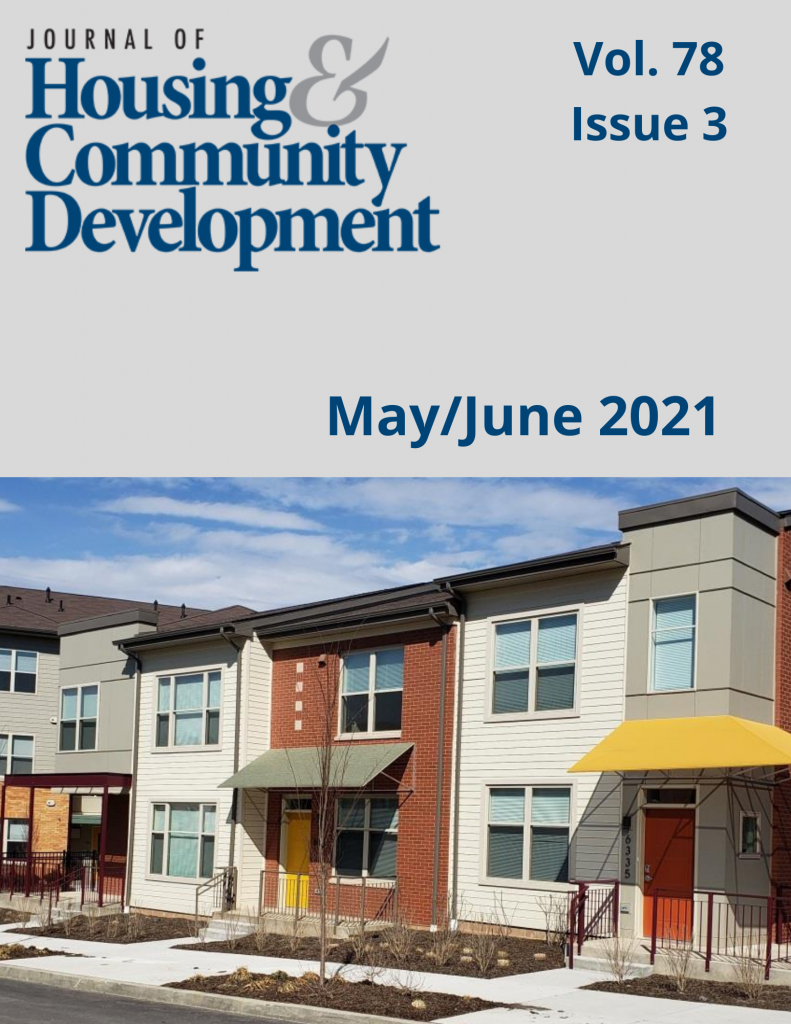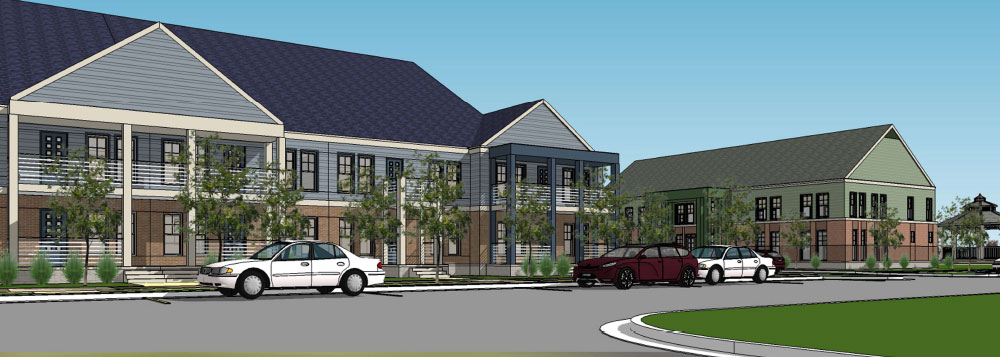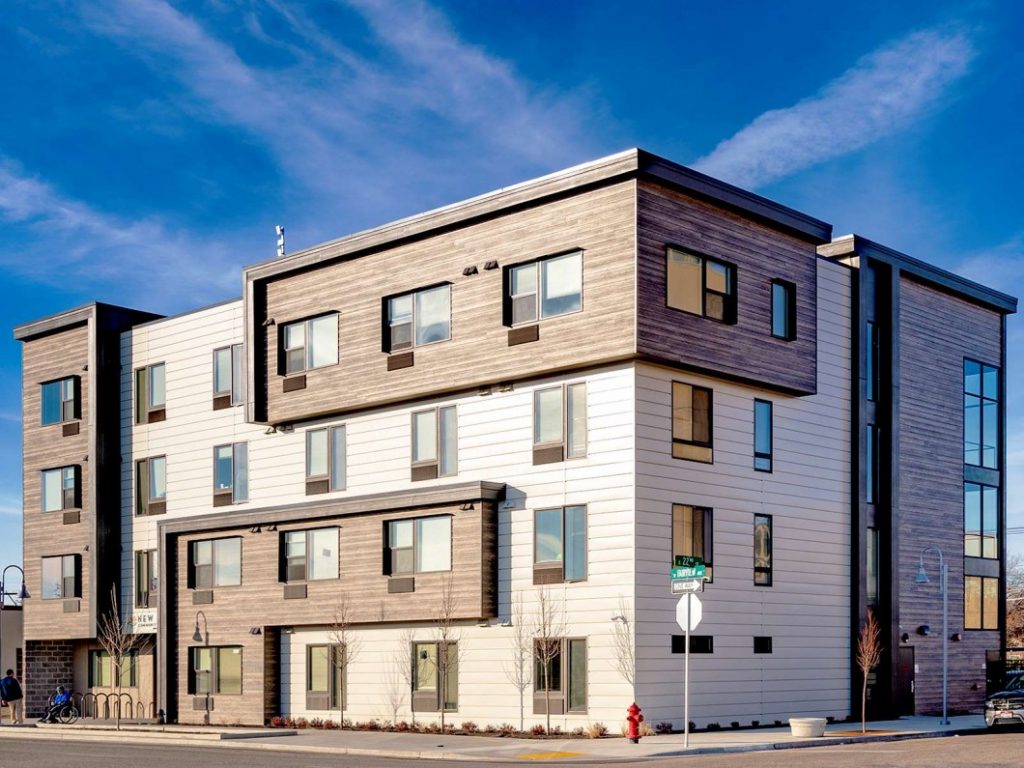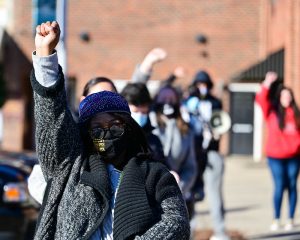Dr. Eva Rosen Discusses Voucher Promise
Dr. Eva Rosen, an assistant professor at Georgetown University’s McCourt School of Public Policy, joined NAHRO for a webinar on April 12. She spoke about her book, The Voucher Promise: “Section 8” and the Fate of an American Neighborhood, which is based on several years of research in the Park Heights neighborhood of Baltimore, Md. Using her research findings, Dr. Rosen explored what housing vouchers were designed to do, what they were hoped to do, and what they really do.
History of Housing Choice Vouchers
Dr. Rosen began her presentation by outlining three broad eras of housing policy. The first, which she referred to as “urban renewal,” began in the 1930s when the government started constructing public housing. Although subsidized housing was intended to alleviate poverty, it often concentrated low-income families into the same neighborhoods and contributed to segregation.
The Nixon administration created the voucher program in the 1970s during the second era of housing policy. Dr. Rosen noted that the program’s original name was “Section 8,” shorthand for Section 8 of the Housing Act of 1937. The voucher program expanded as Congress began disinvesting in traditional public housing. Dr. Rosen quoted President Bill Clinton from a 1995 address to the National Association of Home Builders:
“…we propose phasing out direct subsidies to housing authorities and to end public housing as we know it. Instead of subsidizing bureaucracies, we want to give money directly to residents so that they have the opportunity to take more responsibility for their own lives.”
–President Bill Clinton, 1995
In 1998, the Clinton administration renamed Section 8 as the “Housing Choice Voucher” (HCV) program to further emphasize the notion of resident choice. Dr. Rosen explained that we are now in the third era of housing policy, in which there is a preference for public-private housing partnerships like the voucher program. About 2.2 million households receive a voucher compared to only about 800,000 households receiving public housing.
Research in Park Heights
For 15 months, Dr. Rosen lived in the Park Heights neighborhood and conducted research in the form of participant observation and in-depth interviewing. Her interviews focused on four groups: homeowners, voucher holders, unassisted renters, and landlords.
She chose Park Heights because of its high percentage of voucher households (17%) and its history of racial discrimination. In the 1960s, Park Heights consisted of mostly white, Jewish homeowners. Then, a period of redlining, blockbusting, and white flight transformed the neighborhood’s demographics. It went from 95% white in 1960 to 96% Black by 2010. Today, 33% of Park Heights residents live below the poverty line, which is a much higher percentage than the 10.5% national average as of 2019. One of the residents in Dr. Rosen’s study explained:
“My goodness, Park Heights in 1960, when I bought this house – everybody in the whole area was white. There were no Black people nowhere… In those days, anytime a Black person would buy a house, all the Jewish people would leave.”
Through her research, Dr. Rosen intended to address several questions, such as what “choice” means to tenants who use housing vouchers. She also wanted to research the role of landlords in the voucher program and to measure the extent to which the program fulfills its goals.
Findings on Housing Choice Vouchers
According to Dr. Rosen, there are two main goals of the HCV program: providing greater stability for low-income renters and promoting economic and social mobility. She found that the HCV program often achieves the first goal of residential stability. Chapters 2 and 3 of The Voucher Promise discuss housing insecurity among those with and without a voucher, and the ways the voucher program changes people’s lives for the better. When talking about why they wanted to use a housing voucher, one resident said:
“I just want a new place to live, you know. I just want to feel safe.”
While the HCV program often results in greater stability for low-income renters, it has fallen short in promoting mobility. Landlords still exclude HCV tenants from low-poverty, high-opportunity neighborhoods. Dr. Rosen found that homeowners in Park Heights also excluded voucher holders from their social networks, fearing that the presence of HCV tenants in the neighborhood could devalue their homes. These findings undercut the hope that housing vouchers lead to greater mobility for low-income households.
Dr. Rosen emphasized the significant role of landlords within the HCV program. In general, she found that landlords facilitate predatory inclusion in poorer neighborhoods and exclusion from affluent neighborhoods, which results in a reversal of choice for voucher tenants. Some landlords chose to accept vouchers in Park Heights because they could get higher rents from voucher tenants than they could from market-rate tenants. They also received a guaranteed portion of the rent from HUD. A landlord in Park Heights explained the benefit of HCV tenant rents:
“Everybody prefers Section 8. It’s tough times now. If the tenant doesn’t pay the mortgage, you have to.”
In conclusion, Dr. Rosen’s research found that it is important to listen to those who say that the voucher program saved their lives or provided them with choices they did not have before. Still, vouchers could work better to provide families with housing stability, mobility, and more choice about where they live.
Policy Solutions
Dr. Rosen discussed several policy changes that could improve the HCV program. With additional funding, agencies could provide more assistance for voucher holders, including security deposits, transportation, legal assistance, and mobility counseling. Larger-scale policies that could have a meaningful impact include Source of Income (SOI) protection laws and wider usage of Small Area Fair Market Rents (SAFMR). These policies would expand the range of housing available to voucher holders by outlawing discrimination against voucher tenants and raising the payment standards in low-poverty neighborhoods with higher average rents.
The most significant policy change that Dr. Rosen expects to see in the coming years is an expansion to the voucher program to more eligible households. HCV waitlists are years long in some locations, signaling the need for greater investments in housing assistance. Dr. Rosen saw President Joe Biden’s recent discretionary budget proposal as a positive sign for voucher expansion. She noted that the proposal includes funding for an additional 200,000 vouchers in the upcoming fiscal year.
Finally, Dr. Rosen acknowledged that the voucher program has its limitations. There is still a need for public housing because it serves the “hard to house” and households with specific needs. There should also be more investment in disadvantaged neighborhoods so that people do not have to leave their neighborhoods in search of mobility and better opportunities.
Audience Questions
Peter LiFari, NAHRO’s Mountain Plains regional council president, moderated a question-and-answer session with Dr. Rosen following her presentation. Webinar attendees asked questions about how to change negative perceptions about the HCV program, where to find examples of successful mobility initiatives, and how to address discriminatory landlords in different communities. NAHRO President Sunny Shaw thanked Dr. Rosen for her time and her dedication to improving the HCV program.
NAHRO will host a July 13 summer symposium on “Universal Vouchers: A Path Forward.” The symposium will feature more sessions on strengthening the Housing Choice Voucher program.
More Articles in this Issue
Posterity Heights Paves the Way for Housing Development in Fort Wayne
Fort Wayne Housing Authority (FWHA) won a 2020 Award of Excellence for Affordable Housing for Posterity Heights, an energy-efficient housing…Revitalizing Larimer
The Housing Authority of the City of Pittsburgh won a 2020 Award of Excellence in Community…Growing Farm-Fresh Food in San Antonio
The San Antonio Housing Authority won a 2020 Award of Excellence for Community Revitalization for starting an…Housing First is the Leading Model in Boise
Boise City/Ada County Housing Authorities won a 2020 Award of Excellence for Affordable Housing for New Path Community…Improving Racial Equity via Emergency Rental Assistance
Originally published in Shelterforce, the voice of community development. Long before the COVID-19 pandemic, Black, Latino,…Equity and Well-Being in Affordable Housing: Starting with Voice and Choice
Previously published on the Stewards of Affordable Housing for the Future blog. The COVID-19 pandemic has made clear…






